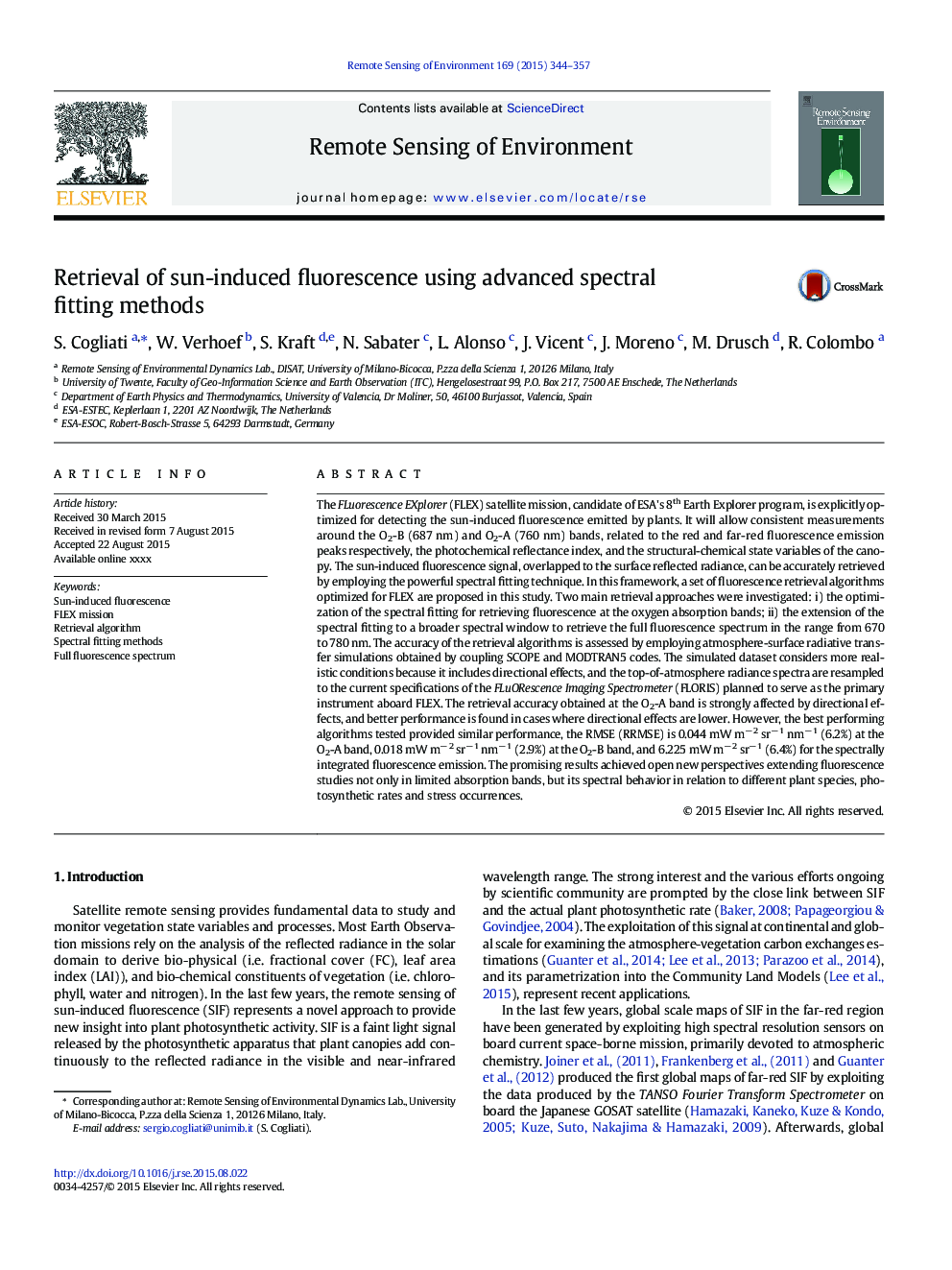| Article ID | Journal | Published Year | Pages | File Type |
|---|---|---|---|---|
| 6345841 | Remote Sensing of Environment | 2015 | 14 Pages |
Abstract
The FLuorescence EXplorer (FLEX) satellite mission, candidate of ESA's 8th Earth Explorer program, is explicitly optimized for detecting the sun-induced fluorescence emitted by plants. It will allow consistent measurements around the O2-B (687 nm) and O2-A (760 nm) bands, related to the red and far-red fluorescence emission peaks respectively, the photochemical reflectance index, and the structural-chemical state variables of the canopy. The sun-induced fluorescence signal, overlapped to the surface reflected radiance, can be accurately retrieved by employing the powerful spectral fitting technique. In this framework, a set of fluorescence retrieval algorithms optimized for FLEX are proposed in this study. Two main retrieval approaches were investigated: i) the optimization of the spectral fitting for retrieving fluorescence at the oxygen absorption bands; ii) the extension of the spectral fitting to a broader spectral window to retrieve the full fluorescence spectrum in the range from 670 to 780 nm. The accuracy of the retrieval algorithms is assessed by employing atmosphere-surface radiative transfer simulations obtained by coupling SCOPE and MODTRAN5 codes. The simulated dataset considers more realistic conditions because it includes directional effects, and the top-of-atmosphere radiance spectra are resampled to the current specifications of the FLuORescence Imaging Spectrometer (FLORIS) planned to serve as the primary instrument aboard FLEX. The retrieval accuracy obtained at the O2-A band is strongly affected by directional effects, and better performance is found in cases where directional effects are lower. However, the best performing algorithms tested provided similar performance, the RMSE (RRMSE) is 0.044 mW mâ 2 srâ 1 nmâ 1 (6.2%) at the O2-A band, 0.018 mW mâ 2 srâ 1 nmâ 1 (2.9%) at the O2-B band, and 6.225 mW mâ 2 srâ 1 (6.4%) for the spectrally integrated fluorescence emission. The promising results achieved open new perspectives extending fluorescence studies not only in limited absorption bands, but its spectral behavior in relation to different plant species, photosynthetic rates and stress occurrences.
Related Topics
Physical Sciences and Engineering
Earth and Planetary Sciences
Computers in Earth Sciences
Authors
S. Cogliati, W. Verhoef, S. Kraft, N. Sabater, L. Alonso, J. Vicent, J. Moreno, M. Drusch, R. Colombo,
